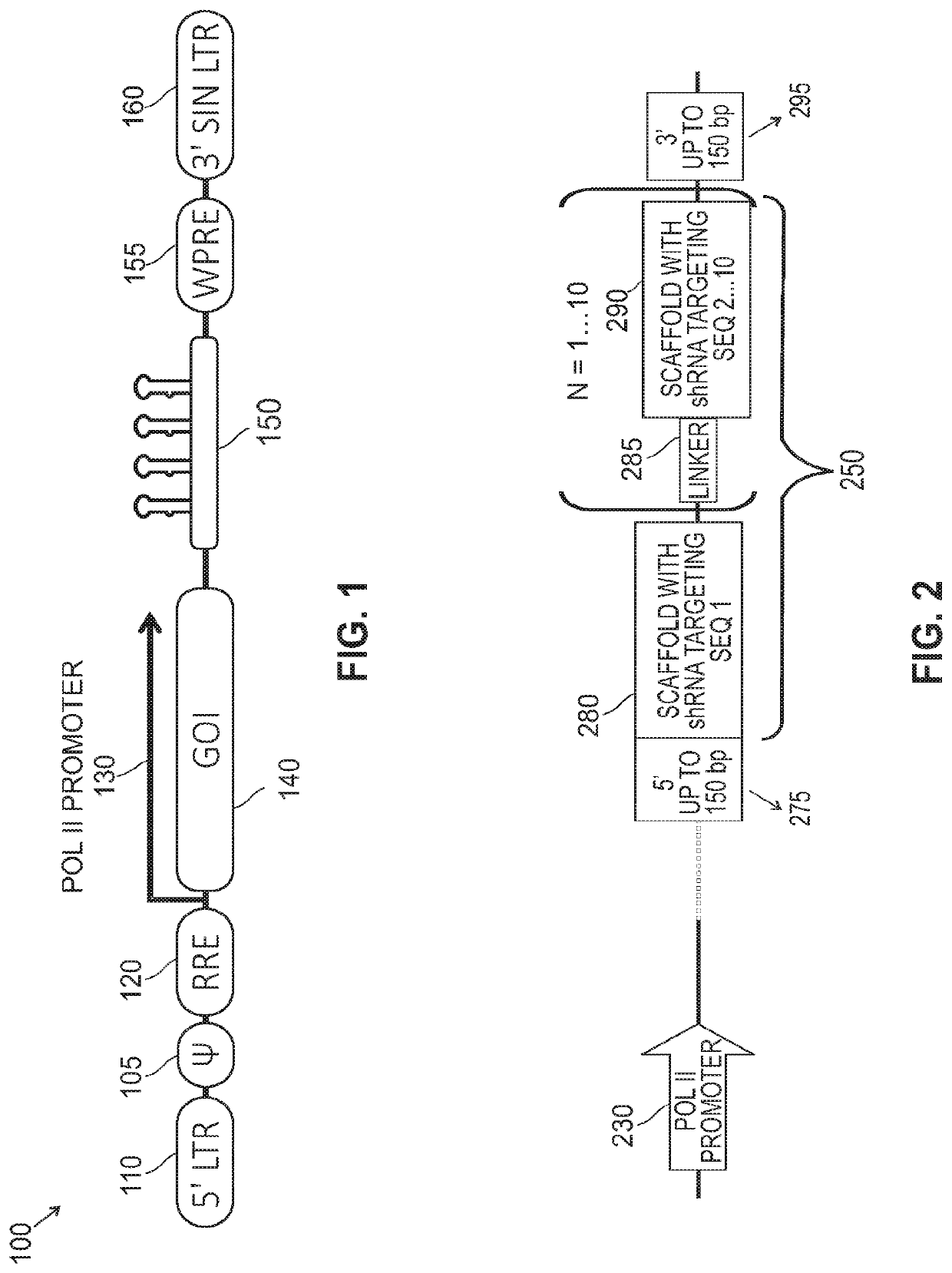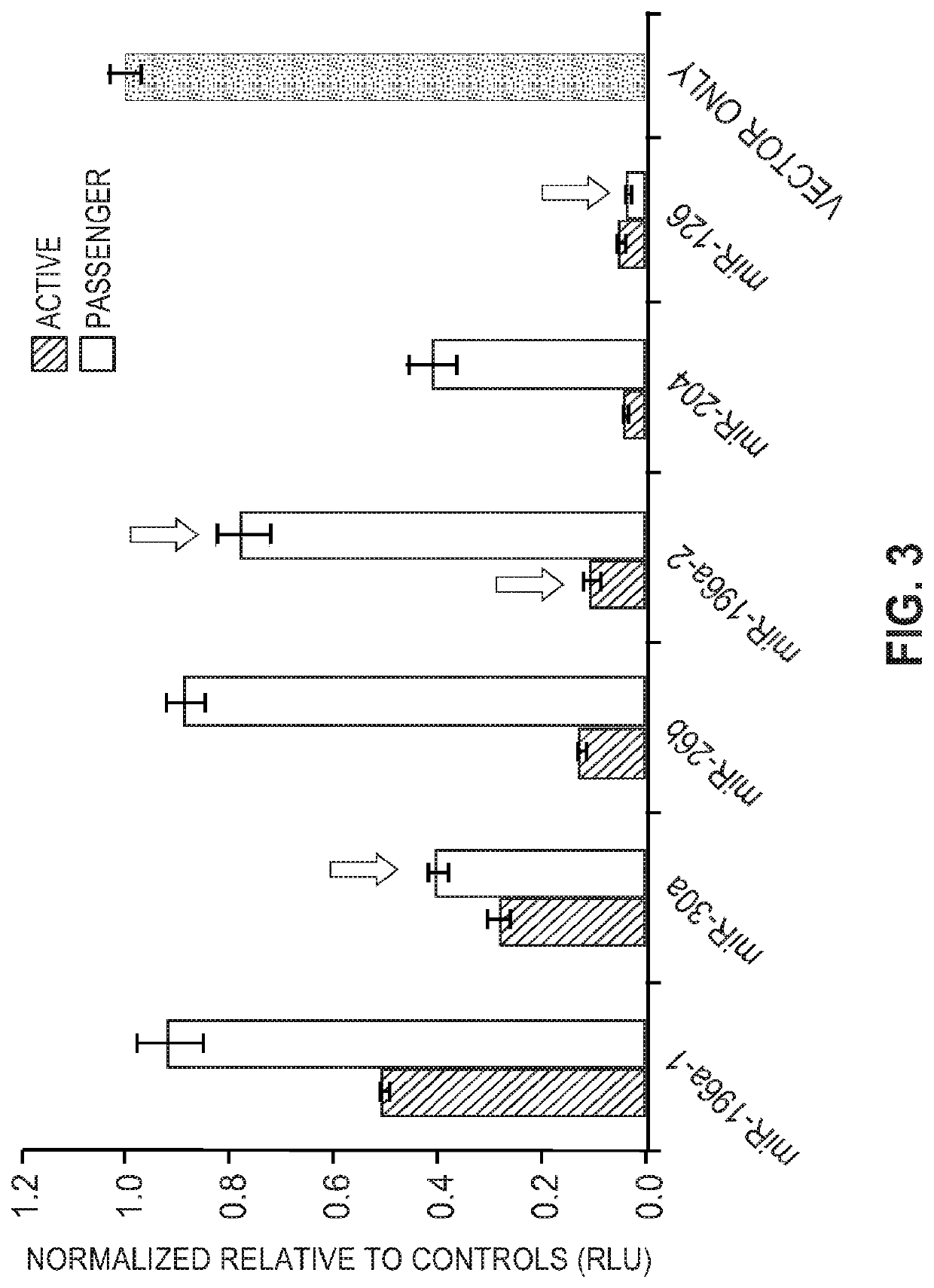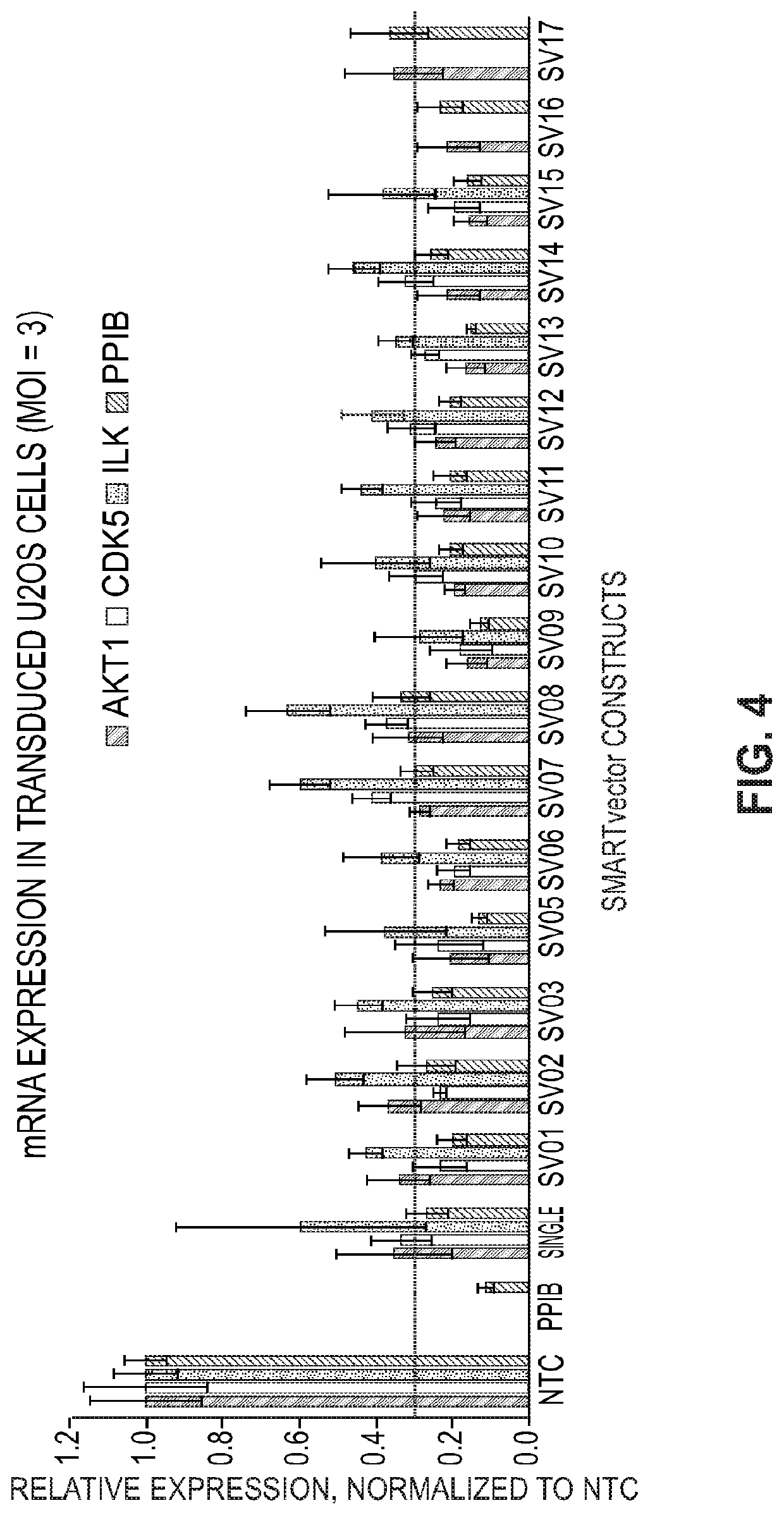Multiplex shRNA for Use in Vectors
a vector and multi-shrna technology, applied in the field of gene modulation, can solve the problems of insufficient multi-shrna multiplexing system, cumbersome use of separate vectors for each shrna, and difficulty in delivering simultaneously in cells,
- Summary
- Abstract
- Description
- Claims
- Application Information
AI Technical Summary
Benefits of technology
Problems solved by technology
Method used
Image
Examples
example 1
Constructs
[0106]A number of multiplex cassettes were designed with linkers. Sixteen linkers that were designed appear in Table I below. All sequences are provided with reference to deoxyribonucleotides, but as persons of ordinary skill in the art will recognize, these sequences encode both RNA and DNA sequences and their complements.
TABLE I SequenceID No:Sequence1GAATCCAACTTACTTCTTCACGACAACACTTACCTTTGTGCAAGCACTTATGATCCTGAT2GAGTCCAATTTACTTCTTCACACATTCCTGTATTTGCAAGCACTTGTCCTGA3GCTCTTTACTCCTCGCCTATTGAGACCTTTAGGATGCGGAAACTGCTTTACTTAACATCT4TGTTGGATGTGGACACTTCTTTACTAATACCTTGTTAACTGGTCTTAATACG5CTTCGATACGATACAGCGGTATGGTGCACCTCAAATCCTGTGGTC6TCGGGCACTTCAATTCCGTAGTTATCTTGAACCTTCGTGGAGCGACAGATACATCT7TCCTCGTACATATAGCATGACTAGCTTTGTGACCTTTGAC1TTCTCTATCAATCTAT8ACATGAGGATATCAGGTAGTCTGCAACACTCTAAGGGCGGTTATCTGTGGT9ATCCAACTTACGTATCCAATATCGGTCTTGCTAATCATGTGTCCTGTTAC10TTCGATCGATACGATAGCGGGGAGTTCGCGTTGTTCCGACGTTGTACACTT11TGCTAACGTCGGTGATCGCGCGAAATAGTCTAGGGCCGACCGGGTCGC12TAGAGTACGAGTCGGCGAACAGTTACATCGAAGTC...
example 2
[0112]A comparison of functionality and off-target effects was undertaken using vectors that each contained a single scaffold with mature (active) and guide (passenger) sequences. The scaffolds were: miR-196a-2, miR-30a, miR-26b, miR-196a-2, miR-204, and miR-126. As a control, measurements were also taken for a vector that didn't contain miRNA sequences.
[0113]Endogenous microRNAs, including 200-300 bp flanking the stem-loop region, were PCR amplified from genomic DNA isolated from HeLa cells. microRNAs were cloned into a vector for co-expression of the microRNA and GFP under a CMV promoter and sequence verification. HeLa cells were plated at 10,000 cells / well in 96-well format one day prior to transfection. microRNA-expressing plasmids (60 ng) were co-transfected with a dual luciferase reporter plasmid [psiCheck2 (Promega); 40 ng] containing the active strand-targeting sequence or the passenger strand-targeting sequence in the 3′ UTR of Renilla luciferase. Data were normalized to th...
example 3
kdown with Multiplexed Vectors Directed to PPIB, ILK, CDK5, and AKT1
[0115]Multiplexed microRNA-based shRNA vectors were transduced into U2OS cells and gene knockdowns were analyzed by RT-qPCR. The shRNAs encoded in the multiplexes were designed to target PPIB, ILK, CDK5, and AKT1. (See Seq ID NO: 23-26 of Table II and SV01-SV15 of Table III.)
[0116]FIG. 4 provides the mRNA expression (Multiplicity of Infection (MOI)=3). These results show that nearly all multiplexed microRNA-based shRNA design achieved ≥70% knock-down in U2OS cells. Additionally, these results show that the position of the shRNA in the cassette did not affect functionality and that there were no differences in silencing for the designs in which two or four multiplexed microRNA-based shRNA were used.
PUM
| Property | Measurement | Unit |
|---|---|---|
| Fraction | aaaaa | aaaaa |
Abstract
Description
Claims
Application Information
 Login to View More
Login to View More - R&D
- Intellectual Property
- Life Sciences
- Materials
- Tech Scout
- Unparalleled Data Quality
- Higher Quality Content
- 60% Fewer Hallucinations
Browse by: Latest US Patents, China's latest patents, Technical Efficacy Thesaurus, Application Domain, Technology Topic, Popular Technical Reports.
© 2025 PatSnap. All rights reserved.Legal|Privacy policy|Modern Slavery Act Transparency Statement|Sitemap|About US| Contact US: help@patsnap.com



